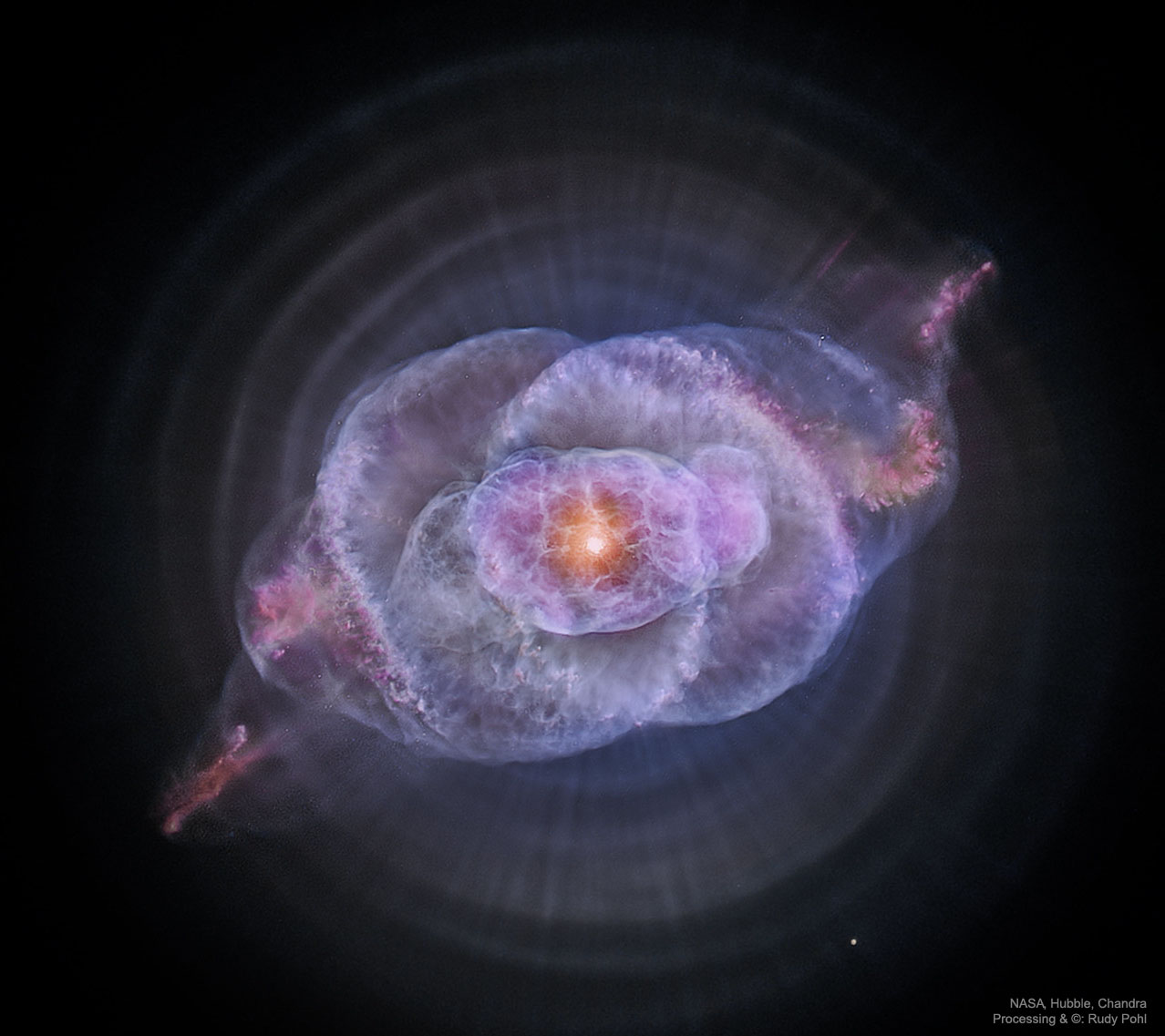A high school graduate, together with scientists, figured out how the amazing Cat’s Eye planetary nebula was formed. He found that the cause of its shape was the interaction of two stars.

Unusual Cat’s Eye Nebula
High school graduate Ryan Clairmont, who is just about to enter Stanford University, decided to solve the mystery of the NGC 6543 nebula, which is also called Cat’s Eye. This is one of the most beautiful and best studied similar objects in our Galaxy.
But until now, no one has exactly explained the strange shape of this object. Cat’s Eye refers to planetary nebulae. They are formed at the final stage of the life of stars such as the Sun. The red giant throws off its shell, turning into a white dwarf, and that expands in space for a while, keeping its shape for a long time.
The nature of the formation of planetary nebulae dictates their shape. Most of them have radial symmetry, they look like circles and rings. But the Cat’s Eye has a pronounced bilateral symmetry, several circles seem to intersect in it, forming knots and threads. In general, it looks more like a rhombus.
The result of the interaction of two stars
Trying to solve the riddle of the Cat’s Eye, with the help of astronomers and the SHAPE program for astrophysical calculations, he was able to create a three-dimensional model of NGC 6543, based on data from the Hubble telescope, which studied the nebula in detail in 2008.
It turned out that spiral clouds of dense gas, partially wrapped around its outer shell, resembling two petals, are responsible for the bilaterally symmetrical shape that the Cat’s Eye has.
The authors of the study believe that the reason for their appearance is the jets beating the poles of the star. The spiral shape of the clouds is explained by the fact that at the moment of their formation, the star was loosening like a top, making the so-called precession.
Some time ago, scientists came to the conclusion that this planetary nebula was formed from the Wolf-Rayet star, a very hot object that is both similar to the main sequence stars and white dwarfs. But it should reset the shell without the formation of these precessional jets.
The only thing that could lead to such a swing of the star is the presence of a companion. The presence of a second star in the Cat’s Eye nebula is a subject of debate in scientific circles for several years. It seems that this theory has now been confirmed.
According to www.sciencealert.com
Follow us on Twitter to get the most interesting space news in time
https://twitter.com/ust_magazine
